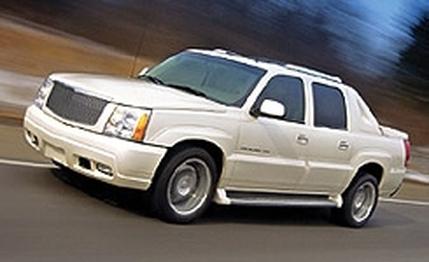 Specialty File
Specialty File
With a curb weight that is almost double that of a Corvette and a center of gravity measured in feet rather than inches above the ground, the Cadillac Escalade EXT luxury five-passenger pickup is as likely a performance vehicle as Rosie O'Donnell is an obsequious Avon Lady. So imagine the confusion in our little brains when we tested a modified Escalade that was quicker than a Porsche 911, a BMW M3, and even a Ferrari 360 Modena F1.
This unholy Escalade was the work of Lingenfelter Performance Engineering of Decatur, Indiana. Although we've covered many of the company's modified Corvettes and Camaros over the years, we've only sampled a few of its trucks.
"Since GM introduced its latest-generation truck platform in 1999," says LPE's Jason Haines, "the number of trucks that we've modified has quadrupled." So, as full-size trucks are good business for the auto companies, it seems large vehicles are also good for tuning shops such as Lingenfelter's.
The problem with tuning trucks is they're heavy. To make one reasonably quick-and provide the well-heeled owner with the kick he or she expects-takes copious amounts of horsepower.
Although a 3300-pound, 350-hp Corvette can outrun just about anything with an additional $20,000 and 200 horsepower, LPE had to more than double the output of the Escalade. The stock 6.0-liter V-8 thumps out 345 horsepower and 380 pound-feet of torque-respectable numbers-but once the makeover is completed, the power and torque levels are outlandish: 700 hp at 5200 rpm and 740 pound-feet at 4600 rpm. That's more than the 493-hp Mercedes S600, the 550-hp Saleen S7, and the 650-hp Ferrari Enzo Ferrari.
At $55,975, this monster LPE motor costs a few grand more than an entire Corvette Z06 and does not share any parts with the stock unit. The block is a heavy-duty aluminum unit that GM developed for its Le Mans-winning Corvettes in 2001. Tucked into the cylinders are 4.13-inch-wide pistons (stock is 4.0) with topside depressions that lower the compression ratio from 10.0:1 to 8.5:1. Stroke was increased from 3.62 inches to 4.0, and displacement was increased from 6.0 liters to 7.0. Two Garrett turbochargers increase intake-air pressure by 9.0 psi, and two 12-by-24-inch intercoolers chill the charge to further increase power.
The last time we sampled this engine, it was in a Corvette, and that experience was a little frustrating because it so easily spun the tires. Sure, burnouts can be cool, but it's a little embarrassing when you want to dust off a pimply-faced punk in a Camaro IROC and instead of effortlessly blowing him off, you're spinning your wheels. Still, that Vette was a rocket, and with a little finesse, it managed to win our September 2002 "Supercar Challenge."